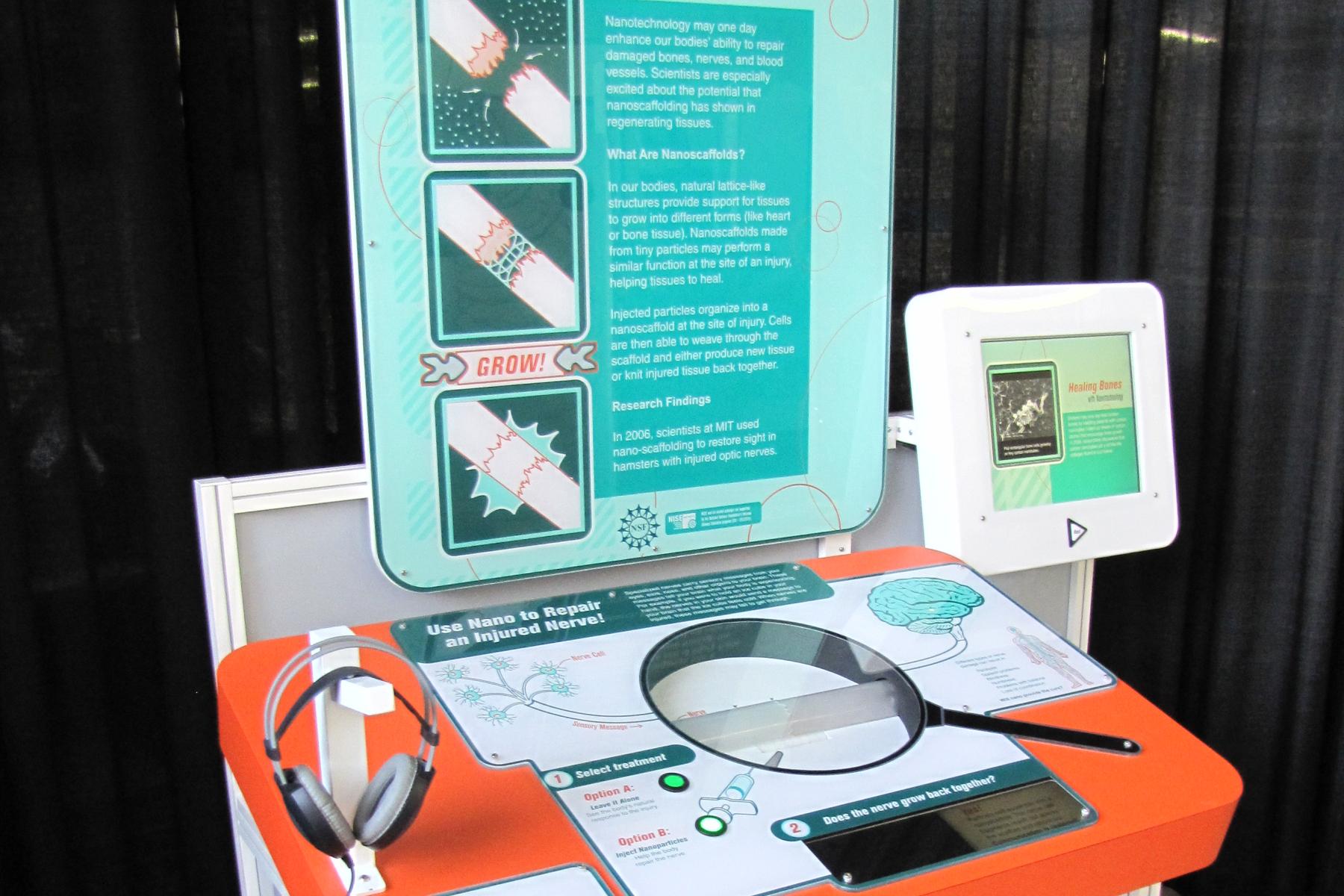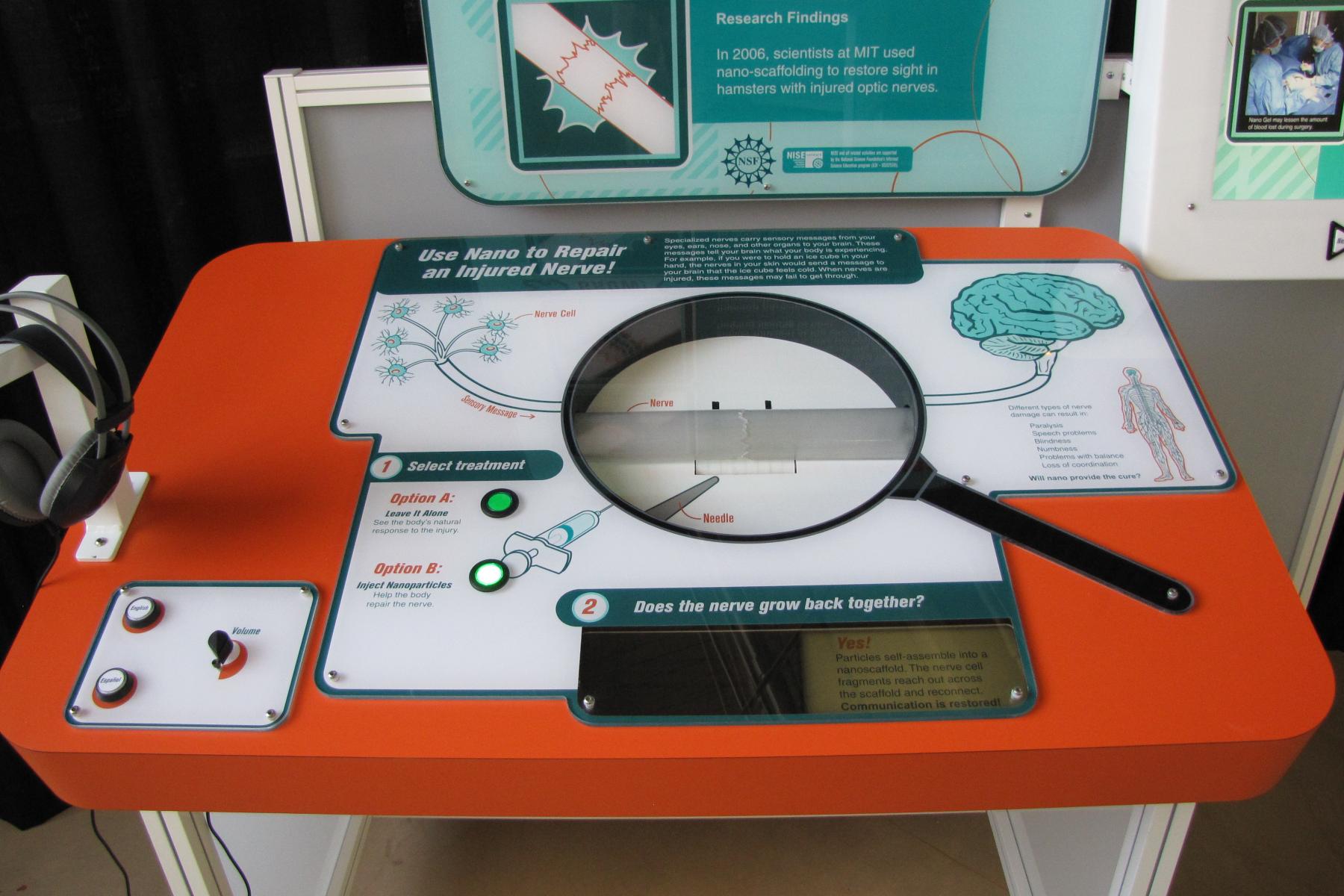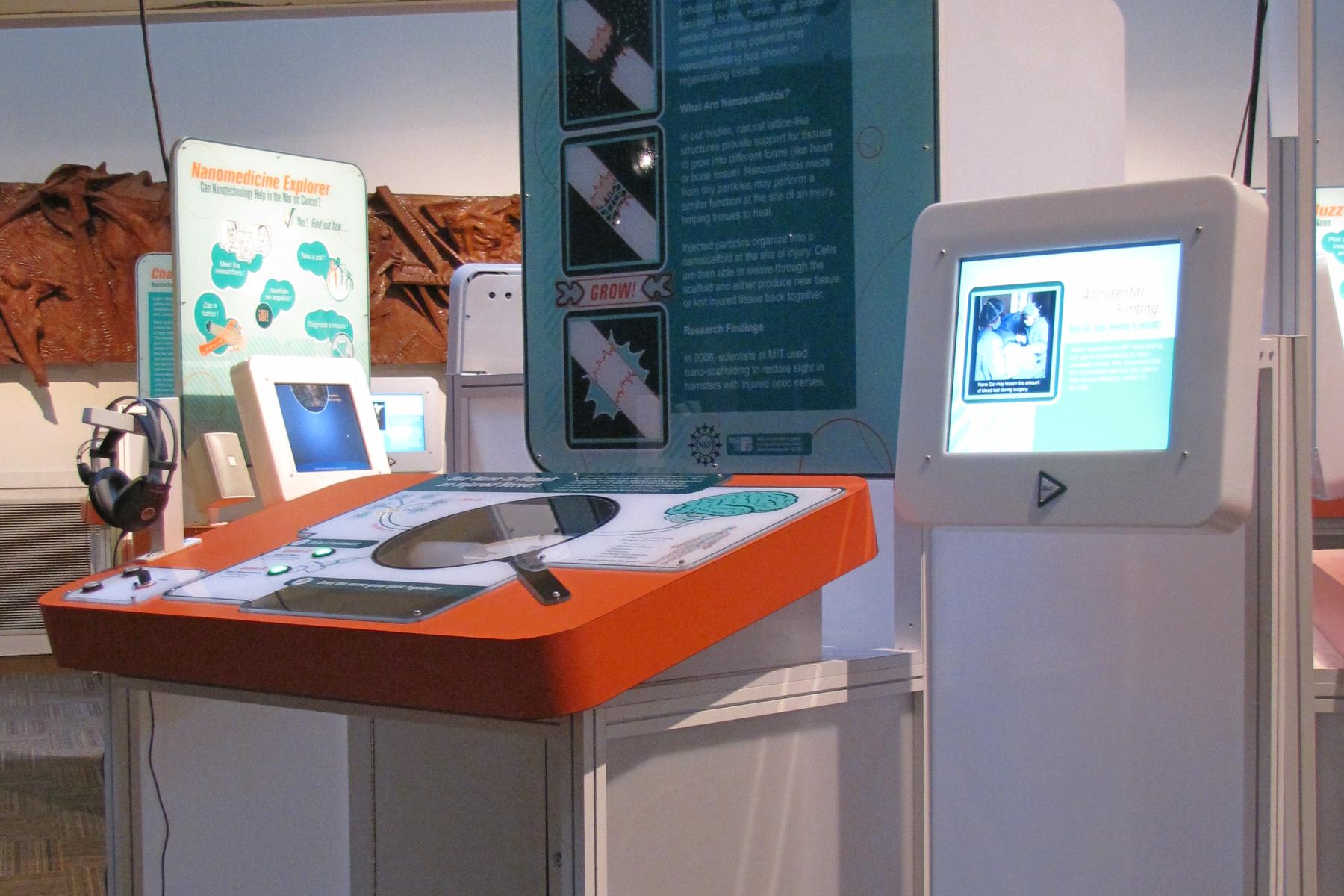DESCRIPTION
Visitors see how nanomaterials are able to form tiny structures called nanoscaffolds that help the body repair damaged muscle, bone, and nerve tissues. In the interactive, an injured nerve is unable to communicate messages. After injecting nanoparticles, visitors can watch as the nerve endings grow back together, and sensory messages are once again able to reach the brain.
This exhibit was part of the Nanotechnology: What's the Big Deal? exhibition which toured the Arkansas Discovery Network beginning in 2010.
DESCRIPTION
Visitors see how nanomaterials are able to form tiny structures called nanoscaffolds that help the body repair damaged muscle, bone, and nerve tissues. In the interactive, an injured nerve is unable to communicate messages. After injecting nanoparticles, visitors can watch as the nerve endings grow back together, and sensory messages are once again able to reach the brain.
This exhibit was part of the Nanotechnology: What's the Big Deal? exhibition which toured the Arkansas Discovery Network beginning in 2010.
TRAINING VIDEOS
OBJECTIVES
BIG IDEA
Researchers are working on ways to repair tissues with nanotechnology.
LEARNING GOALS
Nerve tissue injuries are typically permanent because scar tissue prevents injured nerve cells from reconnecting.
Researchers have created a fluid that can be injected into an injured brain that self-assembles into a nanoscaffold that actually helps the brain heal.
The nanoscaffold enables neurons to grow towards one another, "knitting" the wounded brain back together.
NANO CONTENT MAP
Nanoscience, nanotechnology, and nanoengineering lead to new knowledge and innovations that weren't possible before.
DOWNLOAD FILES
- Regenerating Tissues Brochure (PDF)
- Regenerating Tissues Construction Drawings (PDF)
- Regenerating Tissues Technical Manual (PDF)
- Regenerating Tissues Panel Graphic 1 of 5 (PDF)
- Regenerating Tissues Panel Graphic 2 of 5 (PDF)
- Regenerating Tissues Panel Graphic 3 of 5 (PDF)
- Regenerating Tissues Panel Graphic 4 of 5 (PDF)
- Regenerating Tissues Panel Graphic 5 of 5 (PDF)
- Graphic NSF Credit (PDF)
- Regenerating TIssues Application Screen 1 of 3 (JPG)
- Regenerating TIssues Application Screen 2 of 3 (JPG)
- Regenerating TIssues Application Screen 3 of 3 (JPG)
- Regenerating Tissues Audio (WAV)
- Exhibits and Programs Year 5 Summative Evaluation (PDF)
- Regenerating Tissues Audio (Spanish) (WAV)
Credits
Developed for the NISE Network with funding from the National Science Foundation under Award Numbers 0532536 and 0940143. Any opinions, findings, and conclusions or recommendations expressed in this product are those of the authors and do not necessarily reflect the views of the Foundation.
Creative Commons Attribution Non-Commercial Share Alike 3.0 United States (CC BY-NC-SA 3.0 US).
View more details

NISE Network products are developed through an iterative collaborative process that includes scientific review, peer review, and visitor evaluation in accordance with an inclusive audiences approach. Products are designed to be easily edited and adapted for different audiences under a Creative Commons Attribution Non-Commercial Share Alike license. To learn more, visit our Development Process page.



